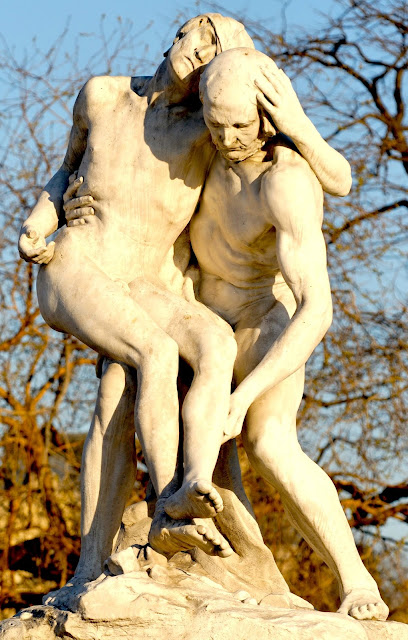[If you should choose to adopt this prompt to contribute your own stories of folks who have gone out of their way to lend genealogy-related assistance to others, I would greatly appreciate a mention to Filiopietism Prism whenever you do so. Thank you! And please do use the same photograph below to illustrate the prompt. ;-) ]
SAMARITAN SUNDAY RETURNS TODAY AFTER A HIATUS OF FIVE WEEKS. TODAY'S POSTED IS BASED ON A TIP IN THE WEEKLY GENEALOGIST OF NEHGS.
The Chris Jensen nursing home -- now the Chris Jensen Health and Rehabilitation Center -- is located in Duluth, Minnesota.
Marvin and Shirley Westerlund were married in Duluth on October 3, 1953. Marvin died after only thirteen years of marriage to Shirley, but Shirley lived until 1992.
Matthew Seppo is a property manager in St. Louis County, Minnesota where Duluth is located. Mr. Seppo is also a determined man and a Good Samaritan who, as an amateur genealogist, recognizes the importance of family history and the materials and objects that document that history.
When an album from Marvin and Shirley Westerlund's wedding was unexplainably discovered in a store room at the Chris Jensen nursing home after lodging there unclaimed for two decades, Matt Seppo obtained the album in his role as property manager. [The nursing facility had been owned by St. Louis County at one point.] Mr. Seppo decided he was going to try to find surviving relatives of Marvin and Shirley to return the genealogical treasure that had come into his hands.
Mr. Seppo began using genealogy websites, public records and any other sources he could think of to aid him in his quest. The Duluth News Tribune ran a story about Mr. Seppo's efforts on December 11, 2013 and slowly various information emerged through email responses to Mr. Seppo.
Good Samaritan Matthew Seppo faced quite a challenge in his quest because Marvin and Shirley never had any children. Shirley was an adopted only child and had no known relatives -- but Matthew was ultimately successful! Read here the full story of how Mr. Seppo persevered in his quest and how he got assistance along the way. You can see a photograph of Marvin and Shirley and learn where the album now resides. The album is no longer in Minnesota, but it is in the hands of a close relative due to the discovery of a very helpful clue placed in an obituary.
_ _ _ _ _ _ _ _ _ _ _ _ _ _ _
Photograph of the The Good Samaritan sculpture by Francois-Leon Sicard (1862 - 1934). The sculpture is located in the Tuileries Gardens in Paris, France. The photograph is by Marie-Lan Nguyen and has been placed in the public domain by her. See, http://commons.wikimedia.org/wiki/File:Good_Samaritan_Sicard_Tuileries.jpg
_ _ _ _ _ _ _ _ _ _ _ _ _ _ _
Copyright 2013, John D. Tew
_ _ _ _ _ _ _ _ _ _ _ _ _ _ _







.png)



+Carpenter+to+her+daughter+Shirley+Carpenter.jpg)
.jpg)
+Tew+-+yr.+unknown.jpg)
.jpg)

.jpg)
.jpg)

.jpg)


.jpg)
.jpg)
.png)

.png)




.png)

.png)








